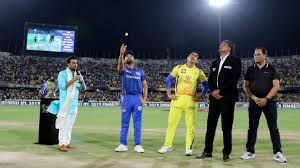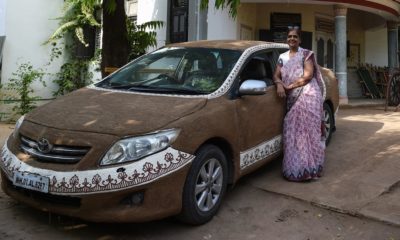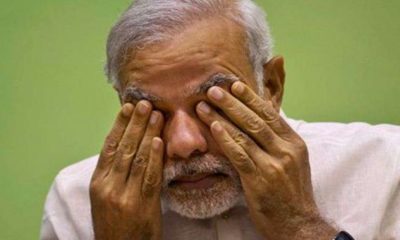Top News
Pollution in AC transit-corridor buses 25 percent lower than in AC cars

 Commuters in air-conditioned buses experience an average 25 percent drop in levels of fine, toxic particles–called PM2.5–than their counterparts in AC cars and a 76 percent drop compared to non-AC modes of transport, according to a new study conducted in Ahmedabad over three seasons.
Commuters in air-conditioned buses experience an average 25 percent drop in levels of fine, toxic particles–called PM2.5–than their counterparts in AC cars and a 76 percent drop compared to non-AC modes of transport, according to a new study conducted in Ahmedabad over three seasons.
The buses studied plied on the 89-km Bus Rapid-Transit System (BRTS) in Ahmedabad, a city of 5.5 million, where the annual growth rate of motorised vehicles (24 perceent) is about five times higher than that of the city’s population (4.7 percent). The BRTS is India’s most extensive and the study indicates how bus-based rapid-transit systems – 94 percent cheaper than Metro rail, according to the study – might be the best option for India’s growing cities.
PM2.5 refers to particulate matter smaller than 2.5 micrometers, or roughly 1/30th the thickness of human hair.
BRTS commuters were exposed to the least PM2.5 levels because toxic particles were most abundant closest to the ground; the buses ran on a segregated corridor, often screened by trees; and travel time was quickest on the BRTS, so limiting PM2.5 exposure.
The study, “Impact of Bus Rapid Transit on Urban Air Pollution: Commuter’s exposure to PM2.5 in Ahmedabad”, was conducted on a 10 km stretch by the Centre of Excellence-Urban Transport, CEPT University, Ahmedabad and EMBARQ India, a transport research advocacy.
The measurements were done in three phases (December 2011-January 2012; April 2012-May 2012 and June 2012-July 2012) representing the winter, summer and the monsoon periods.
India’s urban air-pollution levels exceed safe levels many times over; India has overtaken China in terms of PM2.5 levels and 13 of the world’s 20 most-polluted cities are now in India.
Why other Indian cities need dedicated bus corridors
With Delhi announcing, in its new budget earlier this week, that it would introduce more buses to persuade richer commuters to abandon their cars, the Ahmedabad experience is relevant to larger cities, although Delhi in 2016 controversially dismantled its Rs. 180 crore (over $27 million) 5.8-km bus corridor built in 2008.
With the second phase of Delhi’s odd-even experiment to be implemented from April 15, studies of personal-exposure levels will allow more relevant debate.
About 150,000 buses run in Indian cities, but there are virtually no dedicated corridors for them, a requirement if PM2.5 levels are to be as low as Ahmedabad. No studies have been done of PM2.5 levels in metro-rail systems.
Ahmedabad’s BRTS commuters experienced the city’s lowest PM2.5 levels irrespective of season and time of day, compared to commuters who travelled by other modes of transport. Due to seasonal variations, there was a 57 percent, 49 percent and 67 percent reduction in mean PM2.5 levels compared to other modes of transport during the winter, summer and monsoon respectively.
PM2.5 concentrations varied significantly over the year, registering the lowest levels during the monsoon and highest in winter – mean levels dropped 61 percent from winter to summer and 25 percent from summer to monsoon.
Delhi experiences the highest levels of pollution in winter because of several reasons, including the burning of paddy fields in neighbouring states, winter fog, construction dust and vehicular exhaust, as IndiaSpend has reported.
Buses in dedicated corridor 27 percent speedier than other buses
An non-BRTS bus in Ahmedabad traveled 18 km per hr, an average of 18 minutes per trip, compared with an average travel time of 13 minutes in a BRTS bus, leading to reduction in exposure to PM2.5 levels and other pollutants.
The assessment demonstrates that the reduction of travel time by 25,000 hours can help in reducing exposure to higher PM2.5 counts through BRTS travel and potentially lead to significant health benefits.
What must shift in the debate on air pollution
The primary focus of the air-pollution debate has been the ambient (or atmospheric) pollutant levels in cities from the data recorded by CPCB, IndiaSpend and other sources. The Ahmedabad study emphasises the need to move the debate from ambient readings to personal-exposure levels – which eventually–should be the focus.
“The odd-even experiment didn’t register any decrease in ambient levels as the data reveal, but I am sure it must have had a significant impact on personal exposure levels, which should be the focus going forward,” said Madhav Pai, Director of EMBARQ India, and co-author of the study.
What is the road ahead for Delhi?
The BRTS in Delhi, the world’s most polluted city, failed due to several shortcomings, as an article in The Wire by Dinesh Mohan argued. Mohan, who was part of the team that advised the government on the BRTS, wrote:
The biggest mistake made was to limit the corridor to 5.8 km instead of the planned 18 km. If that had happened, a huge number of bus commuters, bicyclists and pedestrians would have benefitted and served as a pressure lobby to retain the corridor.
All bus drivers and their managers should have been put through a training programme on safe and efficient use of the corridor.
“Rather than investing in expensive freeways and flyovers, Delhi should invest in footpaths, cycle tracks, buses, and BRT,” said Clayton Lane, Chief Executive Officer of The Institute for Transportation & Development Policy, headquartered in the US, in an interview to The Hindu.
(In arrangement with IndiaSpend.org, a data-driven, non-profit, public interest journalism platform. Devanik Saha is a New Delhi-based freelance journalist. The views expressed are those of IndiaSpend. The author can be contacted at [email protected])
Top News
Dr. Abhishek Verma Dedicates a Shelter in Memory of His Mother, Veena Verma, at KGMU; Inaugurated by Daughter Nicolle Verma

World-renowned business tycoon Dr. Abhishek Verma has supported Foodman Vishal Singh’s Hunger-Free World mission. In memory of his mother, Late Veena Verma, who was a 3 term Rajya Sabha MP.
Dr. Verma dedicated a state-of-the-art free permanent shelter for the attendants of patients at KGMU Medical University, Lucknow, under the aegis of Vijay Shree Foundation. His daughter, Nicolle Verma, inaugurated the shelter.

During the event, Foodman Vishal Singh honored Nicolle Verma by presenting her with a memento. Mrs. Nidhi Sharma and Avantika Yadav, associated with the organization, welcomed her with garlands. Following this, Nicolle Verma distributed essential items to the attendants and also handed out fruits. She became emotional remembering her grandmother on her birth anniversary.
On this occasion, she also inaugurated the “Veena Verma Sevalaya” in memory of her grandmother, Veena Verma, to serve the attendants. She expressed, “I feel proud that my family is engaged in nation-building as well as social service. Today, in collaboration with Vijay Shree Foundation founder Foodman Vishal Singh Ji, I feel immensely proud to dedicate this shelter for the poor, helpless, and needy attendants of patients battling serious illnesses like cancer. I am honored to be associated with the Hunger-Free World Mission for humanity.”

Inspired by the continuous humanitarian service provided by Vijay Shree Foundation over the past 17 years, Nicolle Verma donated 10 lakh rupees to support the cause. The purpose of this donation is to ensure that services continue for the needy attendants of patients suffering from severe illnesses in hospitals, as facilitated by Foodman Vishal Singh.
It is noteworthy that Dr. Abhishek Verma’s family has a legacy of public and philanthropic service. They are helping millions to carry forward the values and service work of their parents. On the occasion of his mother’s birth anniversary, Dr. Abhishek Verma dedicated this state-of-the-art permanent shelter at Lucknow Medical College to serve the attendants of patients through the Vijay Shree Foundation.

Supporting Foodman Vishal Singh’s Hunger-Free World mission, Dr. Abhishek Verma assured that he would continually support keeping this flame of humanity alive. He also promised to assist in providing medicines to the helpless patients.
Continuing her grandmother’s legacy of service, Nicolle Verma personally served food to the needy patients and attendants. She said, “It is our good fortune to have received the joy of doing this noble work today through Foodman Vishal Singh. I have taken another step forward in carrying my family’s values and cooperation by joining hands with the Vijay Shree Foundation. My father taught me to serve and help the needy, and I feel happy when I bring a smile to someone’s face.”

On the birth anniversary of the late Veena Verma, the event organizer, Vijay Shree Foundation founder Foodman Vishal Singh, said, “We feel proud and happy that Dr. Abhishek Verma, a globally renowned business tycoon, has extended his support to uplift our country from the hunger index. Today, on his mother’s birth anniversary, he inaugurated a state-of-the-art permanent shelter at Lucknow Medical College, which will always be helpful for the needy attendants of patients. It is a pleasure for me and the organization to receive the affection of Mr. Verma.”
The event was attended by General Manager Verma Family Office Hemant Garg, Sonu Rajput, and the organization’s volunteers, including Sandeep Singh, Parmeshwar Ji, Prashant Rao Gautam, Balram Singh, Ramesh Chaudhary, Suman, Jeetu, Anil, Suraj, Vinay, Manish Bhadauria, Manas Mehrotra, Vivek, Apurv, Happy, and others.























